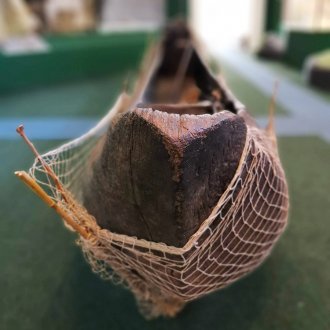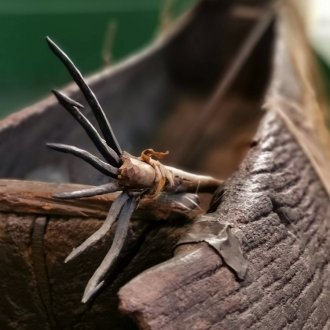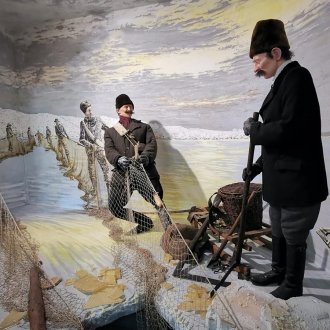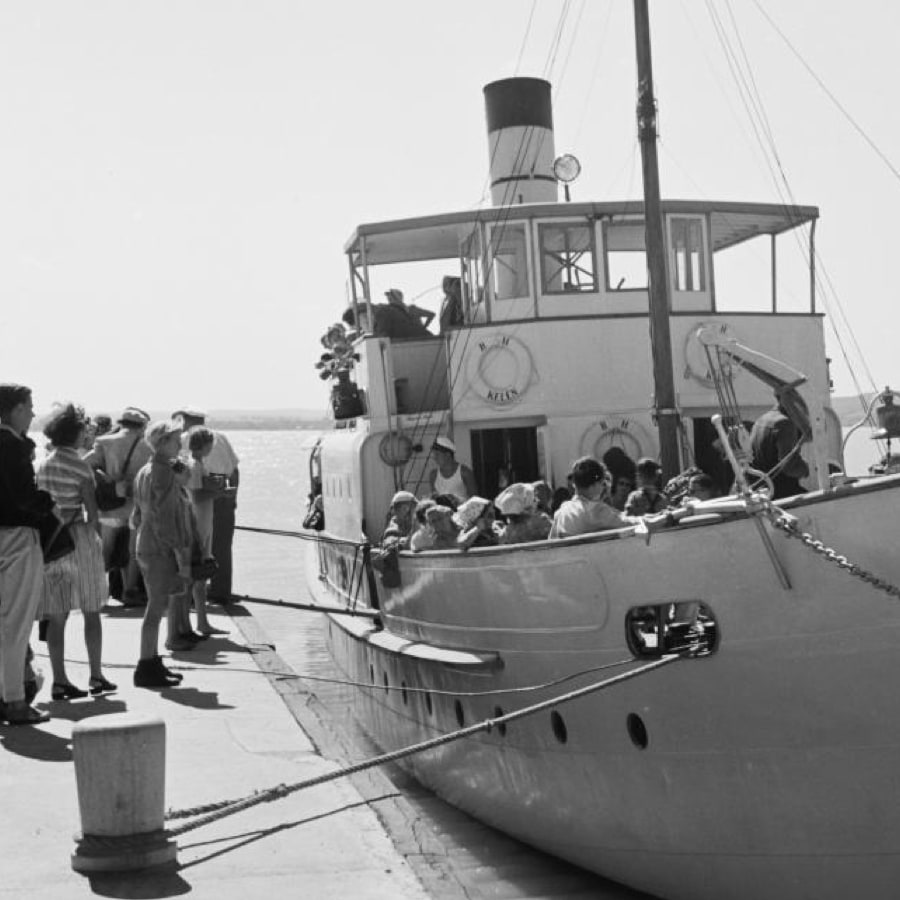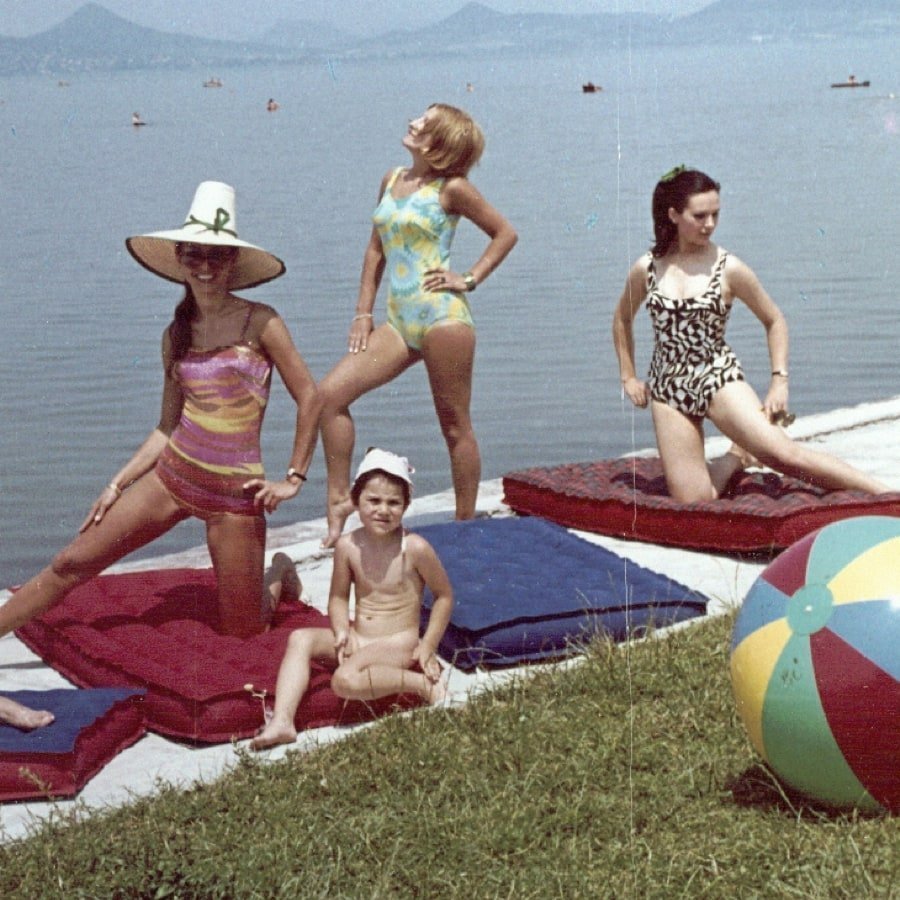The fishing gears made of bone reveal that the fish of Lake Balaton were not absent from the “menu” of the people who lived here thousands of years ago.
The archeological finds presented in the exhibition – hooks, harpoons, net weights, fish bones – prove the presence of early fishing both in Lake Balaton and the surrounding waters. While there was still complete fishing freedom at the time of the Hungarian conquest (9-10th centuries), from the 11th century the right to fishing became increasingly regulated. Interestingly, the groupings of Balaton fishermen from the 17th century were called “bush” or “company”.
Can you guess why the one-man version of the dugout pirogue was called soul-loser?
In the middle of the room, the ancient watercraft of Lake Balaton, a real dugout pirogue lies. The one-man version of this was called soul-loser. In our exhibition, the memories of the Keszthely fishing guild – its guild jug, call sign and flag are also on display.
In giant dioramas, you can observe a peasant preparing to go fishing and crabbing in front of a reed hut, as well as people fishing on icy Lake Balaton. Interestingly, due to the warming climate, the lake is rarely completely frozen today, but ice fishing was indeed particularly successful 100-200 years ago. Hundreds of pounds of fish were often caught in one haul. Winter fishing must have been dangerous, as evidenced by the chapel of St. Michael in Vonyarcvashegy, built on the vows of 40 fishermen.
Come and learn the story of the survivors!


